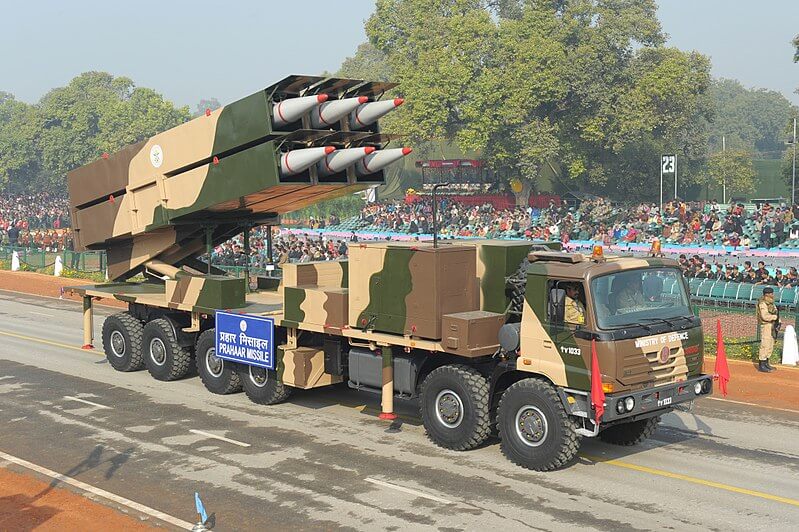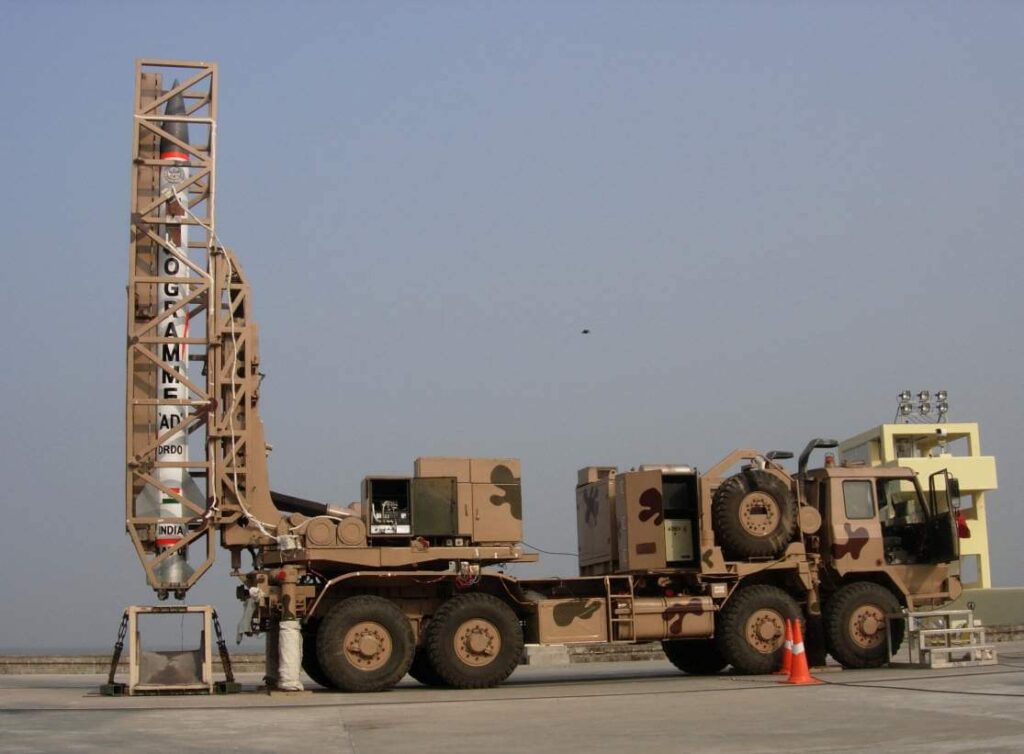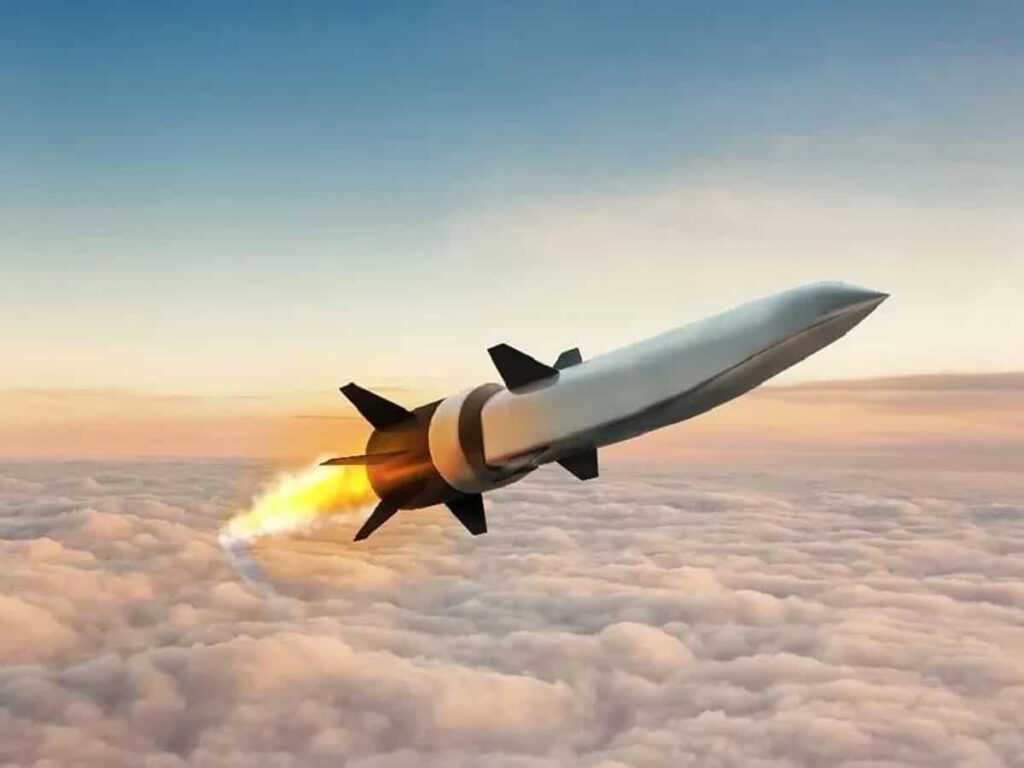
We seem to be living in the age of missile warfare. Missiles are the pride of any country because of their accuracy, range, lethality, and effectiveness. It is virtually impossible to conceive of any modern warfare without missiles.
Historically the word missile has been used to signify an object or projectile that can be thrown, shot or propelled towards a target from a distance; this holds true even today.
There can be different types of missiles – each for a different purpose like surface-to-surface and air-to-surface (ballistic, cruise, anti-ship, anti-submarine, anti-tank, etc.), surface-to-air (and anti-ballistic), air-to-air missiles, and anti-satellite weapons.
Missiles are a critical component of the military arsenals of different nations. Missiles, particularly ballistic and cruise missiles, have been used in regional conflicts, as deterrence strategies, and as tools for power projection.
Some of the reasons why missiles play an important part in modern warfare include:
Long-range

Missiles offer the capability to strike targets, which are far away overcoming geographical barriers and increasing operational reach. This allows nations to engage adversaries far beyond their immediate borders and project force without relying on physical presence or troop deployments. This creates a feeling of fear in the minds of the enemy and plays up their vulnerability. The range of a missile depends on a number of factors like the missile’s propulsion system, payload weight, trajectory, and the desired mission objectives.
Short-range missiles generally have a range of up to approximately 500 kilometres. These missiles are designed for engaging targets (ground-to-ground, air-to-ground, or ground-to-air) within relatively close proximity.
Medium-range missiles have a range of around 500 to 3,000 kilometres. They can be used for engaging targets beyond immediate borders thus serving the purpose of deterrence or force projection.
Intermediate-range missiles can cover larger distances, and have a range of approximately 3,000 to 5,500 kilometers. These missiles are designed to strike targets across continents.
Also Read: Corporatization of the Ordnance factories – facts behind and the facade
Intercontinental Ballistic Missiles (ICBMs) as the name suggests are long-range missiles capable of delivering payloads, including nuclear warheads across continents or distances exceeding 5,500 kilometers
It is possible that future missiles will have even greater ranges, accuracy, and capabilities due to advances in technology.
Force Projection

Missiles can help project military power without the physical presence or deployment of large ground forces. They offer the ability to deliver high explosive or specialized warheads and strike targets with precision deep inside enemy territory. Missiles can enable a country’s military to deter aggression, influence the outcome of conflicts, swiftly neutralize emerging threats, protect national interests, and shape regional dynamics. Once launched, missiles can travel at high speeds, reducing the time between decision-making and execution.
Platform Flexibility

Missiles can be launched from land, ships, submarines, aircraft, or even handheld platforms over ground, sea, air and even space depending on the operational needs and objective. The choice of platform depends on factors such as range, mobility, stealth, target type, and the overall operational objective. This flexibility makes it possible to use missiles for a wide range of operational requirements and enhances a nation’s ability to project force, engage targets and adapt to various operational scenarios.
Land-Based missiles can be deployed from static or mobile launchers for neutralizing land, anti-aircraft, or anti-ship targets. Ship-launched missiles launched from ships or submarines help project power at sea, while surface-to-air missiles (SAMs) enhance air defence capabilities to destroy enemy aircraft and protect naval assets. Anti-ship missiles help engage and destroy enemy vessels. Cruise missiles launched from naval platforms can strike targets on land or at sea.
Air-launched missiles launched from aircraft can be used for aerial combat, precision strikes on ground targets, and for engaging naval vessels. Submarine-launched ballistic missiles (SLBMs) or cruise missiles (SSMs) can be launched from underwater platforms. Submarine-launched missiles can help engage both land and naval targets. Likewise, handheld missiles such as portable anti-tank guided missiles (ATGMs) can be carried and operated by individual soldiers. These shoulder-fired missiles offer ground forces the flexibility to engage armoured vehicles or fortified positions.
Strategic Deterrence

Missiles, particularly long-range ballistic missiles armed with nuclear warheads, serve the purpose of strategic deterrence by discouraging potential adversaries from initiating hostile actions because of the high risk and costs involved which outweigh the benefits.
Mere possession of missiles armed with nuclear warheads or capable of delivering conventional high-explosive warheads signifies the country’s ability to retaliate and sends a strong signal to potential enemies not to take hostile action or else they may have to pay a high price.
Missiles, particularly ballistic missiles, enable a country to maintain a second-strike capability, which means that even if an adversary attacks first, the target country’s surviving missile forces can counter-strike and retaliate effectively. This serves as a strong deterrent against all kinds of conventional or nuclear attacks.
Precision and Lethality

Missiles are known for their precision and lethality. The ability to deliver high explosive or specialized warheads makes missiles highly effective in neutralizing the enemy. Missiles are equipped with advanced guidance systems that enable them to navigate accurately and engage specific targets. These guidance systems, such as GPS, inertial navigation systems, infrared sensors, and radars enhance their accuracy and reduce the risk of collateral damage.
Modern missiles often have sophisticated targeting capabilities that enable them to identify and discriminate between different types of targets. They can use onboard sensors, imaging systems, or data fusion techniques to precisely locate and engage specific targets, such as enemy installations, infrastructure, vehicles, or individual military assets. Some missiles possess the capability to manoeuvre during flight, allowing them to adjust their trajectory and optimize their path toward the target. This enhances their ability to overcome obstacles, evade defences, or hit targets with greater precision, even in complex or heavily defended environments.
Missiles can be armed with a variety of warheads tailored to suit their intended mission. These warheads can range from high-explosive (HE) or fragmentation warheads designed to destroy or disable targets with blast or fragmentation effects to specialized warheads such as bunker busters, anti-ship warheads, or submunition warheads for engaging specific types of targets. Missiles are often propelled at high speeds, which increases their kinetic energy upon impact with the target. This kinetic energy enhances the destructive power of the missile, allowing it to penetrate defences, structures, or armour.
Missiles can be equipped with different types of payloads, allowing for versatility in engaging various targets. This includes the deployment of conventional explosive payloads for precision strikes on infrastructure, military assets, or critical installations. Some missiles can be armed with nuclear warheads, further enhancing their lethality and strategic impact.
Non-Contact Engagement

Missiles can strike targets without direct physical contact with the enemy, reducing risks to personnel and platforms. This ability to engage targets from a safe distance provides several advantages in modern warfare and protects forces from enemy defences, counterattacks, or hazardous environments. Missiles can be launched from platforms that are beyond the range of enemy defences, including ground-based air defence systems or naval surface-to-air missiles. This non-contact engagement capability allows forces to overcome enemy defensive measures, and engage targets effectively. Non-contact engagement also allows military forces to engage targets in hard-to-reach areas, such as heavily fortified or geographically challenging locations. Missiles can be employed to strike targets located in remote regions, mountainous terrains, or dense urban environments, where direct physical contact may be difficult or risky. Missiles can also be used for conducting covert or stealthy operations. Certain missiles, such as cruise missiles or submarine-launched ballistic missiles, can be employed to launch surprise attacks from concealed or hidden positions. This element of surprise can be used to disrupt enemy operations, disable critical assets, or gain a tactical advantage.
Intelligence, Surveillance, and Reconnaissance (ISR)

While missiles are primarily offensive and defensive weapons, they can also be equipped with advanced sensors, cameras, or surveillance equipment for Intelligence, Surveillance, and Reconnaissance (ISR) activities. Such missiles can be used to gather intelligence and provide real-time situational awareness. These sensors can take pictures and transmit valuable data about the target area, including enemy positions, infrastructure, or potential threats. This information can be used for reconnaissance purposes or to enhance overall situational awareness.
Missiles deployed for target acquisition can provide valuable intelligence and capture visual or infrared imagery of the target area, which can be extremely useful for the planning and execution of subsequent military operations.
Missiles with surveillance capabilities can also be employed to conduct post-strike battle damage assessments to evaluate the effectiveness of a strike, determine the extent of damage inflicted on the target, and assess any potential residual threats or secondary targets that may require further engagement.
Missiles equipped with surveillance capabilities can also be used for over-the-horizon targeting and loiter or patrol areas beyond the line of sight, providing persistent surveillance and targeting of potential threats. This can provide critical information about enemy movements, or assets beyond one’s immediate reach.
Long-range missiles equipped with sensors can gather intelligence from the enemy territory, monitor military activities, or conduct monitoring of critical infrastructure or sensitive areas. Such electronic intelligence-gathering missiles can be deployed to intercept and collect electronic signals, such as radar emissions or communication signals, for analysis. These ISR-capable missiles can be used for reconnaissance missions, target acquisition, or monitoring enemy movements.
Non-Conventional Warfare

Missiles can be armed with chemical, biological, or nuclear warheads, making them potent weapons in non-conventional warfare scenarios. The possession of such weapons can significantly influence the strategic balance and shape political dynamics on a global scale.
Psychological and Political Impact
The presence and threat of missiles have a psychological impact on the enemy’s mind. The fear and uncertainty of missile strikes can influence adversaries’ decision-making process and deter them from initiating hostile actions. Possession of advanced missile technology can also enhance a nation’s prestige, and strengthen its position in regional and global politics.
Asymmetric Advantage
Missiles can offer asymmetric advantages, allowing smaller or less technologically advanced nations to challenge larger adversaries. Missiles also provide non-state actors and less powerful nations with the means to challenge conventional military forces. As force multipliers, missiles can help overcome numerical or technological disparities and disrupt enemy operations, or inflict significant damage even with limited resources.
Survivability and Resilience

The mobile, hidden, or submarine-based nature of certain missile systems enhances their survivability and resilience. Mobile or concealed launchers make it difficult for adversaries to locate and target missile forces, increasing their effectiveness as a deterrent. Submarine-launched ballistic missiles (SLBMs) offer an additional layer of deterrence as they can be deployed from concealed and difficult-to-detect platforms.
Ambiguity and Ambivalence
The presence of a diverse and multi-dimensional missile arsenal, including nuclear and conventional missiles, introduces ambiguity and ambivalence. The potential ambiguity surrounding the nature and capability of a country’s missile forces can create uncertainty and deter potential adversaries from taking aggressive actions, as they may not fully understand the consequences of their actions.
Force Multiplier

Missiles act as force multipliers by enhancing the capabilities of military forces. Missiles enhance the effectiveness of military operations and provide significant advantages to the user. By offering extended reach, precision, operational flexibility, and deterrent capabilities, missiles significantly multiply the effectiveness of military forces. They provide a wide range of options for engagement, disruption, and deterrence, enhancing a nation’s military capabilities and strategic posture. Missile defence systems can be deployed to intercept and neutralize incoming missiles, enhancing a country’s defensive posture.
Technological Advancements

Advances in missile technology, including miniaturization, propulsion systems, guidance systems, and warhead design, have made missiles more capable, reliable, and adaptable. These advancements have improved the performance, range, speed, and effectiveness of countermeasures against enemy defences. These improvements in propulsion systems, guidance technologies, miniaturization, and materials have led to the development of more capable and versatile missiles.

